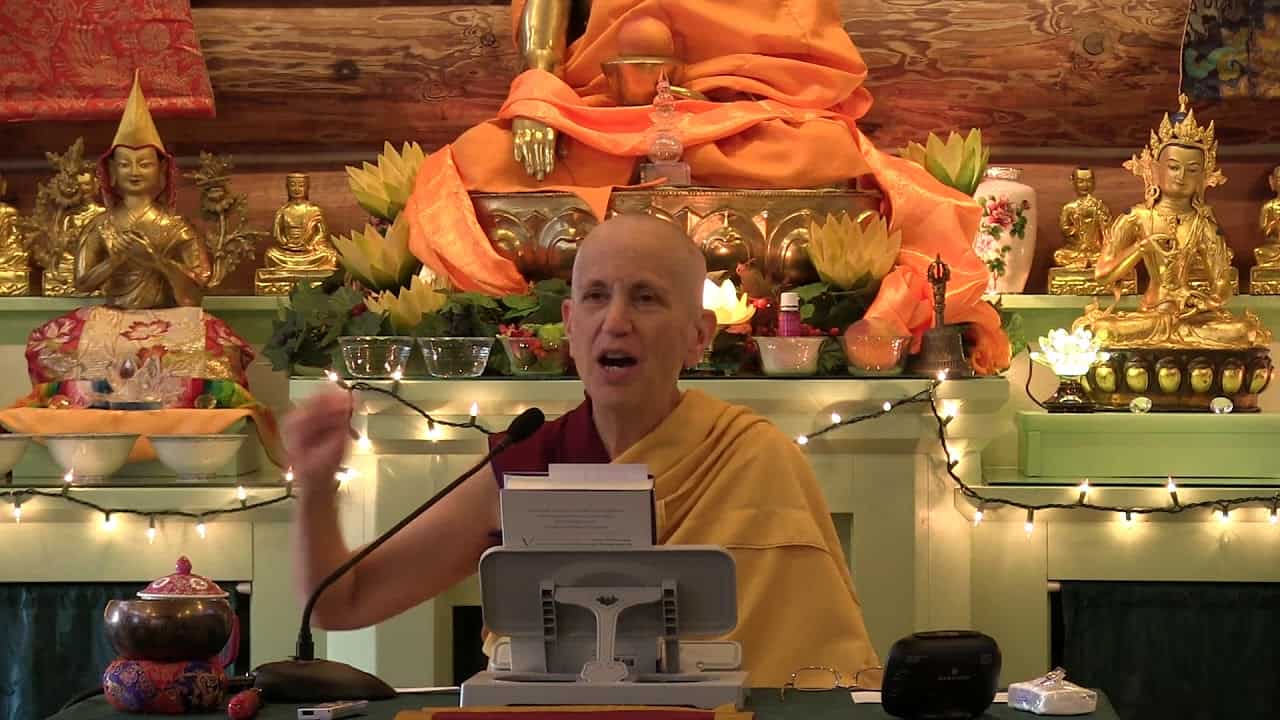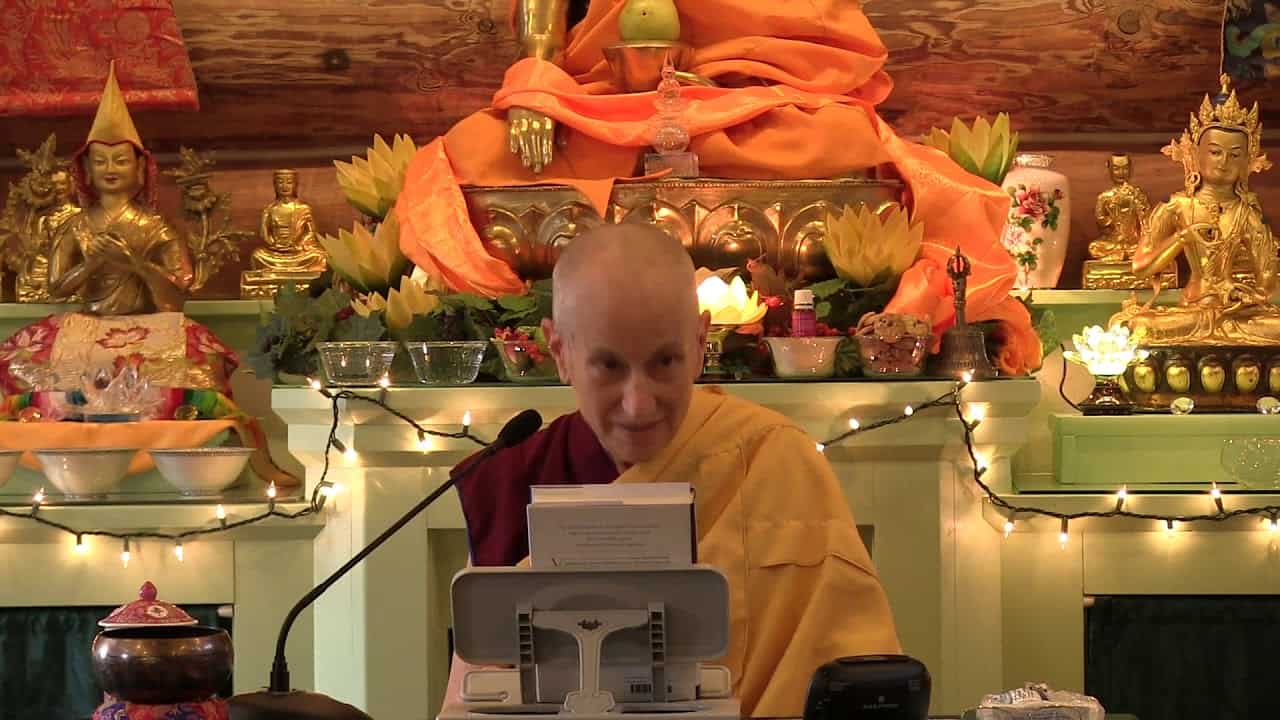The two truths and non-deceptive knowledge
04 Foundation of Buddhist Practice
Part of a series of teachings given during a retreat based on the book The Foundation of Buddhist Practice given at Sravasti Abbey.
- Ultimate and veiled truths
- Ultimate analysis
- The unity of the two truths
- Chapter 2: Gaining nondeceptive knowledge
- Three kinds of objects and their cognizers
The Foundation of Buddhist Practice 04: The two truths and non-deceptive knowledge (download)
Contemplation points
- From the Prasangika view, explain ultimate and conventional existence? Why are ultimate truths true? Why are conventional truths false or veiled? What is the danger in seeing conventional things as existing inherently?
- Explain how both conventional and ultimate truths exist simultaneously on the same base, existing together and depending on each other.
- Why is it important to be able to distinguish between the three kinds of objects and their cognizers, verifying or disproving the teachings for ourselves?
- Make examples of evident phenomena, slightly obscure phenomena, and very obscure phenomena that you already know. How did you come to understand them? Which type of reliable cognizer was involved?
- Consider how we know things such as the existence of atoms, the Ice Age, or the qualities of other solar systems. Which of the three types of objects are they and how do we know them?
- If you have never been to Antarctica, which of the three categories of phenomena is Antarctica in relation to you? Is it very obscure because you have to depend on another person’s testimony to know what it looks like? Is it slightly obscure because by seeing photographs or a 3D model you can infer what it looks like? Would it be evident because you could see it through live streaming on the Internet?
Venerable Thubten Chodron
Venerable Chodron emphasizes the practical application of Buddha’s teachings in our daily lives and is especially skilled at explaining them in ways easily understood and practiced by Westerners. She is well known for her warm, humorous, and lucid teachings. She was ordained as a Buddhist nun in 1977 by Kyabje Ling Rinpoche in Dharamsala, India, and in 1986 she received bhikshuni (full) ordination in Taiwan. Read her full bio.


